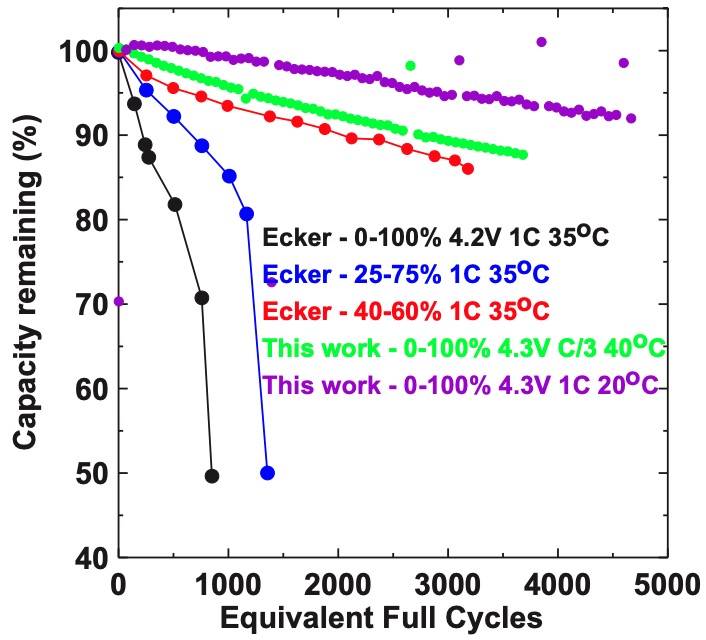https://electrek.co/2019/09/07/tesla-battery-cell-last-1-million-miles-robot-taxis/
The new battery tested is a Li-Ion battery cell with a next-generation “single crystal” NMC cathode and a new advanced electrolyte.
Dahn’s team have been extensively testing these cells and based on the results, they think that the battery could power an electric car “for over 1.6 million kilometers (1 million miles).”
Here’s how Dahn’s team describes the results:
“We present a wide range of testing results on an excellent moderate-energy-density lithium-ion pouch cell chemistry to serve as benchmarks for academics and companies developing advanced lithium-ion and other “beyond lithium-ion” cell chemistries to (hopefully) exceed. These results are far superior to those that have been used by researchers modelling cell failure mechanisms and as such, these results are more representative of modern Li-ion cells and should be adopted by modellers. Up to three years of testing has been completed for some of the tests. Tests include long-term charge-discharge cycling at 20, 40 and 55°C, long-term storage at 20, 40 and 55°C, and high precision coulometry at 40°C. Several different electrolytes are considered in this LiNi0.5Mn0.3Co0.2O2/graphite chemistry, including those that can promote fast charging. The reasons for cell performance degradation and impedance growth are examined using several methods. We conclude that cells of this type should be able to power an electric vehicle for over 1.6 million kilometers (1 million miles) and last at least two decades in grid energy storage.”
We are talking about battery cells that last two to three times longer than Tesla’s current battery cells.
They have tested the battery cells under different conditions and cycles. Even at the extreme temperature of 40’C, these cells were lasting 4000 cycles.
With an active cooling system, like in Tesla’s battery pack, it was pushing the battery cells to over 6,000 cycles, which would easily mean over 1 million miles in a good battery pack.

Controlling the charge to less than 100% state-of-charge also helps push the longevity.
In the research paper, Dahn’s team especially reference that this new longevity potential would be particularly good for ‘robo taxis’:
“This situation may change with the proposed introduction of “robo taxis”, long haul electric trucks and vehicle-to-grid applications. In the former, vehicles will be driving all day, much like a conventional taxi and undergoing nearly 100% DOD cycling. Long haul trucks will almost certainly run in near 100% DOD situations. Cells in vehicles tethered to the grid will be racking up charge-discharge cycles even when the vehicle is not moving. Clearly EVs destined for vehicle-to-grid applications, robo taxis or long haul trucking, would favor a lithium-ion chemistry that could deliver many more charge-discharge cycles in a decade than an EV that was destined for typical commuter driving where high energy density to give the longest driving range for weekend trips might be emphasized. Electric buses represent another application where duty cycles approaching 100% DOD are used on a daily basis.”
The details of this new battery cell come as we learned that Tesla is working to build its own cell manufacturing line.